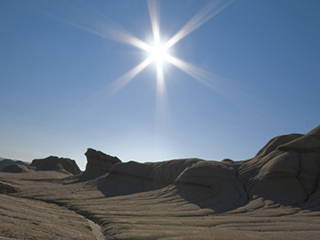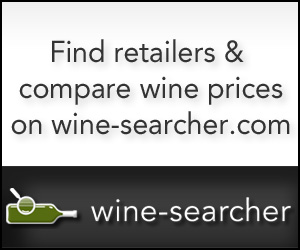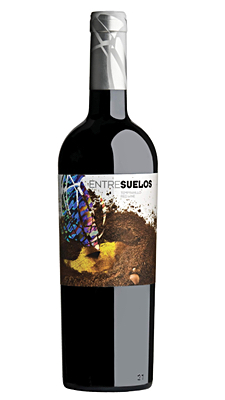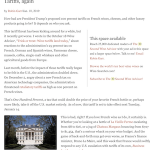As we live through a year of pandemic, monster fires, extreme weather events, warming temperature in many regions, shrinking ice sheets, rising sea levels and so many more strange events, it’s becoming difficult to deny that Earth’s climate is changing. But can we taste climate change in our wine glass?
Explore Wine-Searcher
Wine-Searcher.com makes it easy to find the wines you love, compare prices, find bargains, and locate vendors. Visit Wine-Searcher now to discover its many features, including its popular Top 10 Best Value Wines.
No matter where we stand on the political spectrum, it would be foolish to ignore the increasing mass of evidence mustered by non-political organizations like the National Aeronautics and Space Administration (NASA), which recently published this thorough report, “Climate Change: How Do We Know?”
If we think about it, fine wine has been pointing to some kind of climate evolution for quite a few years, in the form of increasing alcohol levels and ripeness in vineyard regions that have marked gradually higher average temperatures since before the turn of the last century.
I’ve followed this trend in occasional articles for at least 20 years, writing for example in 2002: “While the trend isn’t universal, many wines are creeping upward in alcohol content. As recently as the 1980s, it was unusual to see a red wine much over 13 percent alcohol, with whites lagging a percentage point or so behind. A wine labeled 12.5 percent may actually contain anything from 11 to 14 percent. … But some wines nowadays seem to start at 14 percent and go up from there.”
In 2006 I followed up on that with this commentary: “It can hardly pass without notice that the past 10 to 15 years in most of the world’s temperate zones have seen a progression of record-hot summers unmatched through the 20th century, and an undeniable trend toward more alcoholic wines. This trend was already attracting notice when I wrote about it four years ago, This, of course, was before the summer of 2003 brought the hottest vintage on record through much of Europe, not to mention the chaotic, if not overheated, weather that flooded out some Europe’s top wine regions in September 2002.”
In fairness, climate change alone is likely not the only culprit in rising alcohol and ripeness in a lot of modern wines. In the 2006 article I added “Climate change may not be the only variable. Modern wine-yeast strains have been developed that yield higher alcohol levels. The art of ‘canopy management’ – pruning grapevine leaves so as to increase or decrease the amount of ripening sunlight that reaches the grape bunches – can also be used to influence ripening. And modern, high-tech winery manipulation such as spinning cone technology and reverse osmosis may be used, among other things, to tweak alcohol levels.”
What’s more, I pointed out in another article a year later, warmer climate “has played directly into increasing market demand based on high ratings by U.S. critics – particularly Robert M. Parker Jr. and Wine Spectator’s writers – who seem to prefer fruit-forward blockbuster wines to more traditional cooler-climate styles focused on earth and elegance.”
Returning to the subject in 2016, my words began to sound familiar if not repetitive: “As I’ve written often over the years, significantly warmer climate is not necessarily a good thing for fine wine. Over-ripening in unaccustomed heat yields grapes that make highly alcoholic wines with too much fruit, too little acid, lacking the ideal balance that wine lovers seek and prize. … As global temperatures warm, regions that were once perfect for Cabernet Sauvignon, Pinot Noir, Nebbiolo and other top-rank varieties may reach the point where they simply can’t grow them well. At some point, growers may have to choose between holding on to tradition at the risk of losing quality, or throwing out tradition, ripping out beloved vineyards, and replanting with different varieties, not traditional in the region, that can stand the heat. In short, they may have to start all over again.”
So can we detect the impact of warmer weather in the wine glass? I don’t think there’s any doubt about that, and as an example I present today’s featured wine, a Tempranillo from Castilla Y León in Southeastern Spain. Looking back over my tasting reports, I find a similar, modest 2001 Tempranillo from Tierra de Castilla. It came across as pretty typical Tempranillo, with tasting language like “Clear dark ruby, deep, brooding black fruit, appetizing but delicate, fruit and unveiled spicy notes of cinnamon and cloves … black fruit, oaky spice and mouth-watering acidity in good balance.”
I won’t say the 2015 Bodegas Tridente “Entresuelos” Tempranillo I tasted for today’s report was a bad wine. It was enjoyable in its own right. But Tempranillo varietal character wasn’t easy to find in this dark, almost opaque wine with its almost Portlike aromas and flavors of black plums, stewed prunes, coffee and chocolate turbocharged by 14.5% alcohol and crunchy tannins. That’s the style of wine that long, hot summers foster, and if it’s not worse, it’s certainly different. My tasting notes are below.
Today’s Sponsor:
Explore Wine-Searcher
Wine-Searcher.com is the place to go online if you want to find where to buy a particular wine that interests you. What’s more, Wine-Searcher.com offers so much more. It’s well worth a visit just to discover its many features, including its popular list of the world’s Top 10 Best Value Wines.
Today’s Tasting Report
Bodegas Tridente 2015 “Entresuelos” Tempranillo de la Tierra de Castilla Y León ($13.99)
Typical of modern hot-climate wines, this 100% Tempranillo shows a dark reddish-purple color, almost opaque in the glass. Its ripe aroma lifts up black plums and stewed prunes in a full aroma and flavor that’s almost Portlike. It’s not quite Porty in flavor, although the warm 15% alcohol is headed in that direction. Ripe plum and prune flavors are surrounded by hints of coffee and chocolate. It’s framed by good acidity and rough tannins, with simple black fruit lingering in a very long, rather hot finish. Not for the faint of heart, it’s a reasonable choice if you’re looking for a hefty wine to go with red meat or game. U.S. importer: Cutting Edge Selections Inc., Cincinnati. (Sept. 17, 2020)
FOOD MATCH: The producer suggests a broad range of pairings: “Rice, pasta, (noodles, spaghetti, macaroni), vegetables, mushroom, stewed meat, sausage, pork, roast meat, red and/or white meat with sauces, grilled meat, short or medium cured cheeses.” We enjoyed it with pasta with fresh garden tomato sauce and basil and plenty of grated Parmigiano to kick up the pairing; but as noted, it really calls out for rare roast beef or even venison.
WHEN TO DRINK: The 2016 vintage is already on the market, but I see no rush to drink up this rich, sturdy red. Assuming good cellar conditions, drink over the next five years or so.
VALUE:
It’s a good value at my local $14 price, which is within range of Wine-Searcher.com’s $13 average U.S. retail.
WEB LINK
Producer Gil Family Estates provides this detailed fact sheet on Entresuelos Tempranillo.
FIND THIS WINE ONLINE:
Check prices and find vendors for Entre Suelos Tempranillo de la Tierra de Castilla Y León on Wine-Searcher.com.
Follow this Wine-Searcher link to find listings for dozens of other Tempranillo wines.
TALK ABOUT TEMPRANILLO:
Join this month’s Wine Focus conversation, Tempranillo Tantrum, in our WineLovers Discussion Group.
More affordable wines
Want tips to still more good, inexpensive wines? Here are Wine-Searcher links to vendors and prices for a bunch more wines for $10 or less that I’ve told you about during the past year or two. Please tell us about your favorites!
- La Vieille Ferme Vin de France Rosé ($8.99)
- La Fiera Montepulciano d’Abruzzo ($8.99)
- Laroque Cité de Carcassonne Cabernet Franc ($9.99)
- Domaine de Pouy 2016 Côtes de Gascogne ($7.99)
- Alamos Mendoza Malbec ($9.99)
- Caposaldo Chianti ($8.99)
- d’Arenberg McLaren Vale “The Stump Jump” ($9.99)
Sponsor the Wine Advisor.
We appreciate your support
Support The 30 Second Wine Advisor and help us pay the rent while reaching 25,000 dedicated readers with your sponsorship message in this space, at the top of this E-letter, and on our social media. If you’re an established business in wine, food, and similar ventures, there’s no better way to focus your message toward an audience that comes here for just those topics. See our Sponsorship Page, or email Robin Garr for more information.
Wine Forum and Social Media
If you have questions, comments or ideas to share about today’s article or wine in general, you’re always welcome to drop by our online WineLovers Discussion Group, the Internet’s first and most civil online community.
Discussions are open for public viewing, but you must register to post. If you’re a Facebook user, you can join our forum with a single click! All you need to do is visit the forum and click “Social Login” at upper right.
We’d also be delighted to have you visit and “Like” our WineLovers Facebook Page. This way you can get Facebook notifications when there’s a new The 30 Second Wine Advisor issue or a topic of particular interest on the WineLovers Discussion Group (WLDG).
We’re sorry if you must leave us, though. If you choose to leave our list, I’d appreciate it if you’d take a moment to tell us how we could have better served you. Email Robin Garr at wine@wineloverspage.com.








